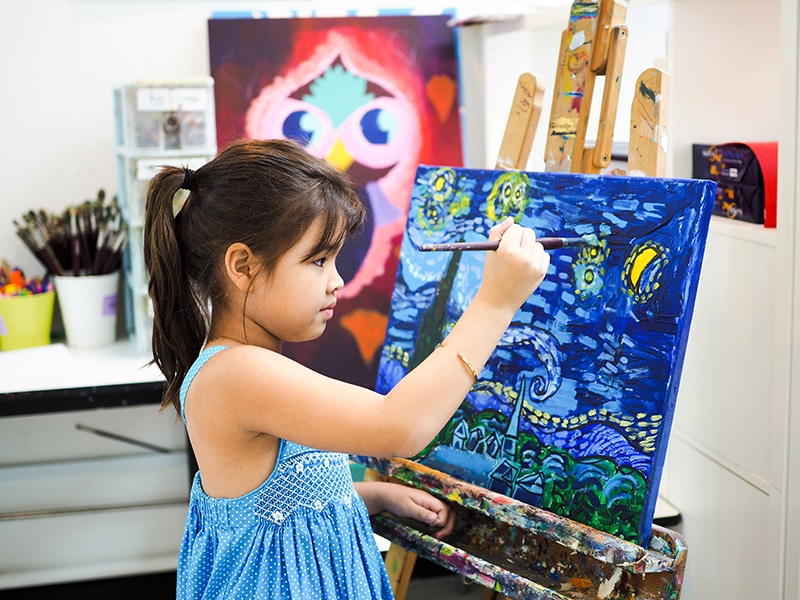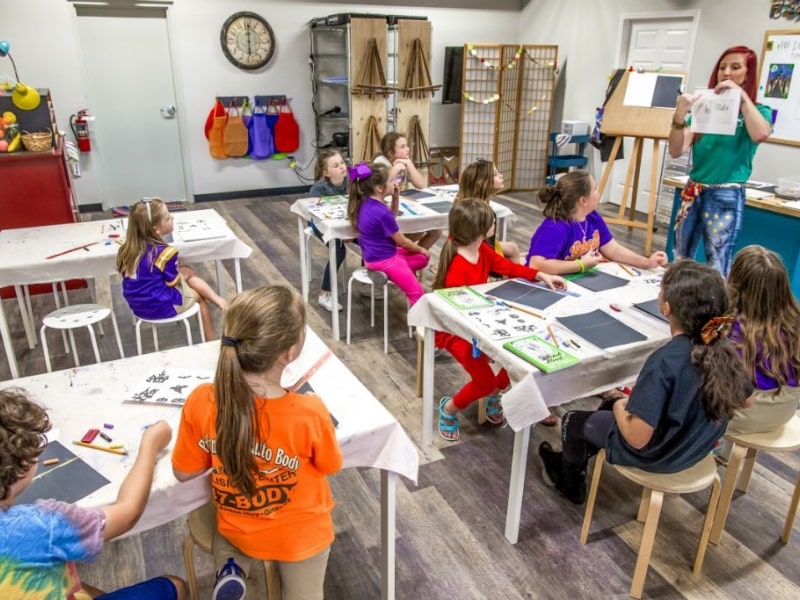How to instill in a child the love of art

A child’s interaction with fine arts will not only broaden the understanding of the diversity of life, but also stimulate the development of the right hemisphere, which is responsible for the perception of color and form, orientation in space, imagination, abstract thinking. In addition, artistic impressions will help to form a good taste in absolutely everything.
So, where to start. First, let everything that surrounds the child be beautiful. After all, notions of beauty, first of all, based on what the child sees around. The environment, the house or apartment in which the child lives, his toys. And it is not a question of your ceilings being stucco, the handles on the door were expensive, pretentious shape, and children’s toys only on behalf of famous expensive brands.
Not at all. The main thing is to keep your house clean and bright. Disorder and junk, broken and cluttered things, create even for an adult a sense of anxiety and concern. Notice how Japanese and Scandinavian designers are distinguished by their good taste, also because from childhood they grow up in minimalist interiors, with white walls and interesting objects of art.

The best thing a child can do is to absorb what is a natural part of his or her daily life. Various postcards from museums, albums with illustrations by artists, reproductions by great masters and live works by contemporaries will leave an indelible mark on the child’s memory and development.
Here, of course, it is important to remember the age restrictions, so, for example, it is not worth showing a very young connoisseur the cut off head of the Medusa with the Rubens snakes. It is better to start with domestic scenes, where children are depicted. So the child will be easier to perceive what is happening, as the hero in the picture he will take for.
Next it is, of course, the creative work of the baby. Yes, everyone, one way or another, draw with children. But here, the creativity of the adult himself is important. Don’t limit yourself to ordinary pencils and felt-tip pens. Offer a variety of colors (children are very fond of gouache), different techniques of creativity, whether it’s a mosaic or an application, experiments with volume.
It is very important not to restrain the gusts of a young creator, and this is what most parents have a problem with. When an adult voices his or her personal feelings about dirty clothes, body or painted wall, he or she stiffens and limits the creative flight of the child. And who knows, perhaps your limitations will cause a person not to allow themselves to manifest themselves in life as an adult.
Here I would like to give an example of the story of one of my acquaintances, who at 5-6 years old told my mother that she wants to draw an American flag on the whole white wall in the spacious living room. Mom said okay, draw it. And this already grown up girl, who has achieved a lot in different areas of his life, remembers this episode as a kind of click, after which she, as a child, realized that even the most daring cherished desires can easily come true.
Yes, this is one of the effective simple and classic ways to instill in a child from childhood good taste, love and understanding for art. It’s an important point. As many leading art critics call it – do not send your child to a museum on a class tour.
Especially the first time. Honestly, all he will remember is the crowd of people pulling classmates and most likely a tedious guide. It’s better to bring a child for the first time into this world with a tour guide you know. Or, if there is a certain baggage of knowledge, become such a guide and tell him about the great works of art yourself.
Also remember about age gradation. And no, I do not call to go with a small child to the small exhibitions presented in the foyer of museums, on the contrary, take the children to the big iconic museums. Just remember that the child is still a child and do not insist that the child at 5 years of age to understand the restless yellow or all the passion of smear impressionists.
He’ll definitely understand it and feel it later. Now just describe with him what is depicted in the picture, pay attention to the details, tell short and easy stories from the lives of artists, missing the fact. There is also the opinion that you should not show your child abstraction before the age of 10, but I do not agree with this 100%. It’s a basic principle to filter properly.
And remember that interest can be instilled only through love, do not force your personal expectations. You are the most basic example and inspirer for your child. If you will always be curious and beautiful inside and outside, your child has no chance to grow up a bad person.





